大头花
都是些琐碎的小事。以后读起来,给自己找个乐子。Ushuaia claims to be the southern most city in the world. It is really quite fitting that this is where we start our Antarctica trip. It’s a short flight from El Calafate, which already sits at the southern end of the South America continent.
The city is located on Tierra del Fuego, an archipelago at the southern tip of the continent. Tierra del Fuego literally means “land of fire”. It was so named by early Portuguese explorer Ferdinand Magellan because he saw many smoke columns rising from the land and believe those were camp fires of Indians.
Waiting for our flight to Ushuaia at El Calafate Airport

Ushuaia has a population of more than 50,000. It is tiny compared to places like Buenos Aires, but in Patagonia, it’s a metropolis. Our ship does not leave until the next day, so we roamed around the city after dropping our bags at the hotel. We are staying at a little B&B designed by its current owner, Silvia. She came to Ushuaia from Europe for work more than 20 years ago, and ended up designing and building her own house here and settled down.
The city has maybe two main streets, with most of the shops alone Av San Martin. Av Maipu is a wide street at the water front, where there are lots of tourist booths, and most importantly, the docks. The other streets are mostly residential.
Looking toward the city from the docks
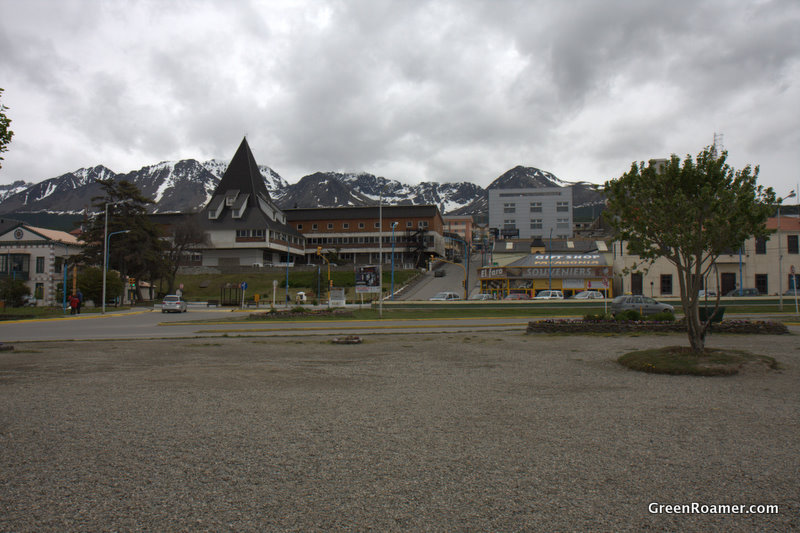
Before going back to our hotel we bought some sunscreen from a drugstore, the lovely girl at the register couldn’t find enough change and gave us a handful of candies instead. We had no idea that these will become precious resources that we fight over on the ship. Don’t get me wrong, they feed us very well, but they don’t give out candies. The sun started to go down around 10PM and it looked like rain’s coming. We turned in for the day after a warm meal at a local cafe.
The next morning we woke to light, but steady rain. We checked out of the hotel and left our luggage with Silvia. The cruise company was supposed to pick them up and bring them to the ship directly.
The center of the city is no bigger than a square mile. We are eager to see our ship, but the docks is accessible only when boarding. I was able to confirm the name of our ship using my telephoto lenses from the shore. Now that’s settled, we are free to walk around. Boarding time is 4pm, we have 6 hours to kill.
It's kinda hard to see from this picture, but our ship's at the end, opposite to the cargo ship

There are other people standing where we were, pointing at the ships, likely our fellow passengers. Many of them we will get to know well in the next 20 days. Remember that Japanese guy we met in Torres Del Paine, the one who had to sleep outside without a tent? We met him again walking along the docks, small world.
Graffiti on a rock

The docks area is also home to an Argentinian naval station. There’s nothing more than a small frigate and a few gun boats. Maybe the larger ships were out at sea. You can take pictures to your heart’s content, as long as you stay outside of the restricted area.
Entrance into the Naval Station
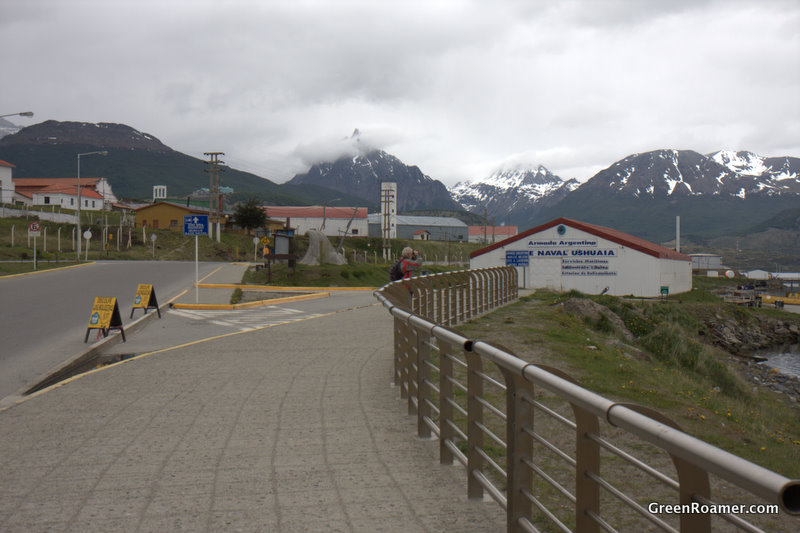
The small collection of navy ships
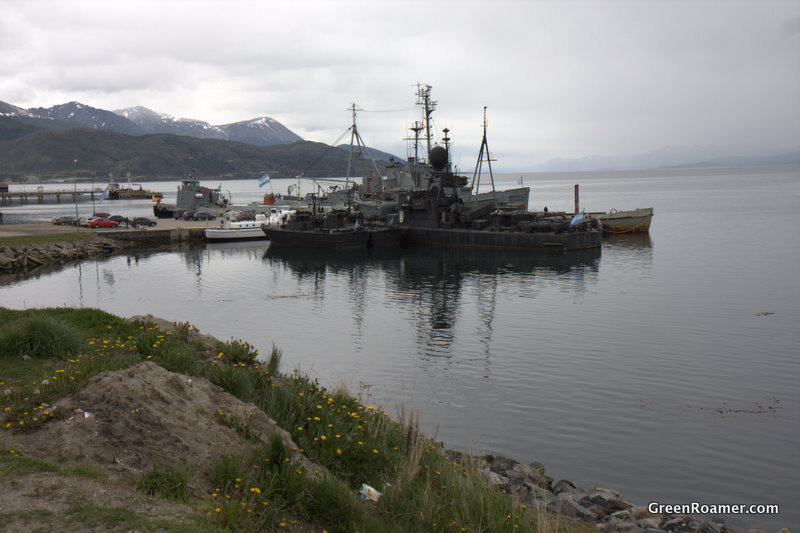
Bright colored sheds of various tour operators
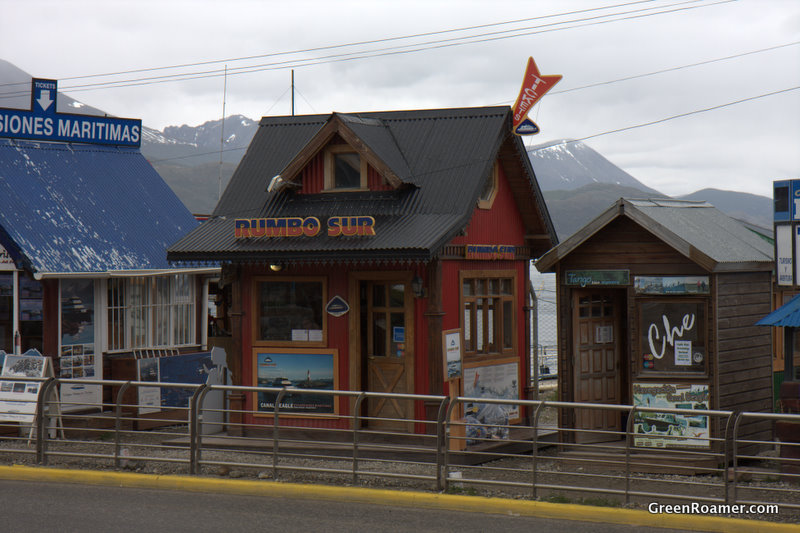
In Argentina things move at a slower pace. Many of the stores will close after noon and reopen at 5pm. This, together with the fact that it was a Sunday, meant that we were walking around in the rain not finding much to do. Eventually we went back to our B&B and asked if we could spend a few hours in the lobby while we wait for the ship. Silvia took pity on us and took us in. We have not left for Antarctica yet, being warm and dry already felt so good.
Before going to the assembly point for the passengers, we sampled seafood paella in a local restaurant on San Martin. Food is a bit expensive at 130 pesos (1:4.5 or so). But considering that this is the touristy part of town, it’s OK. The seafood is really fresh.
We met a group from Shanghai in the restaurant. They were also going to Antarctica, but on a shorter 9-day trip. Interestingly, Ushuaia was the first place in South America where we met any Chinese tourists.
Yummy!

At 3:30 we went to the assembly point, which is a waterfront hotel. The reception area was already full of people. After everyone signed up, we were herded on a bus, and to the ship we go!
Our ship, the Akademik Ioffe, is a Russian research ship chartered for polar cruises. The captain and all the ship crews are Russian. The “people related” staff members were all employees of One Ocean Expeditions. Like your typical cruise ships, they came from all over the world. We will get to know and love many of them in the next three weeks of sailing.
Tracy and I had a double with shared bathrooms. Our cabin was positively tiny, but had all the storage we needed, and a wash basin. This looked like crew quarters turned into guest rooms. We liked it as it’s the closest cabin to the dinning room. Woohoo!
Dinner was served at 7:30. One of the owners of the cruise company, Andy, gave a welcome speech and made some introductions. The food was good, better than I expected. My expectation was quite low as this was a research ship. I’m happy that I was proven wrong.
I did say they feed us well, didn't I?
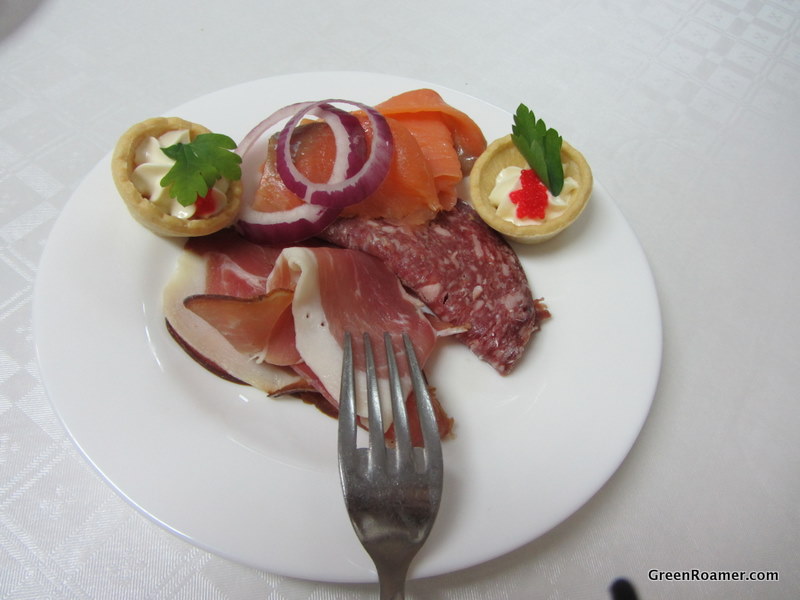
Our ship had less than 90 passengers, so the check in process is significantly smoother than say, a Caribbean cruise. The ship left port promptly after everyone’s on board.
Leaving Ushuaia behind
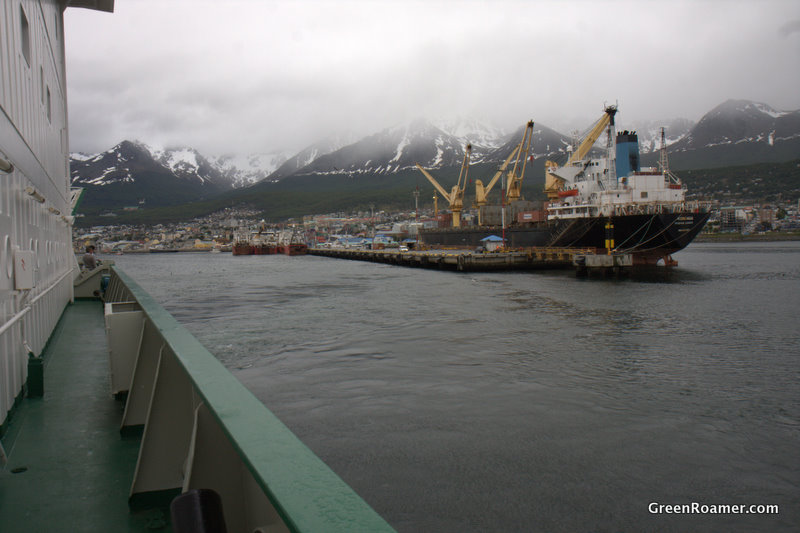
The ship’s full of excited people running around checking out the facilities for the first time. We were no exception. It’s hard not to be excited on a trip that’s going to take us to the mysterious land that we had never thought we would one day set sail to.
Tracy checking out the little gym on board. This is the first of the whopping two times we had visited the place.
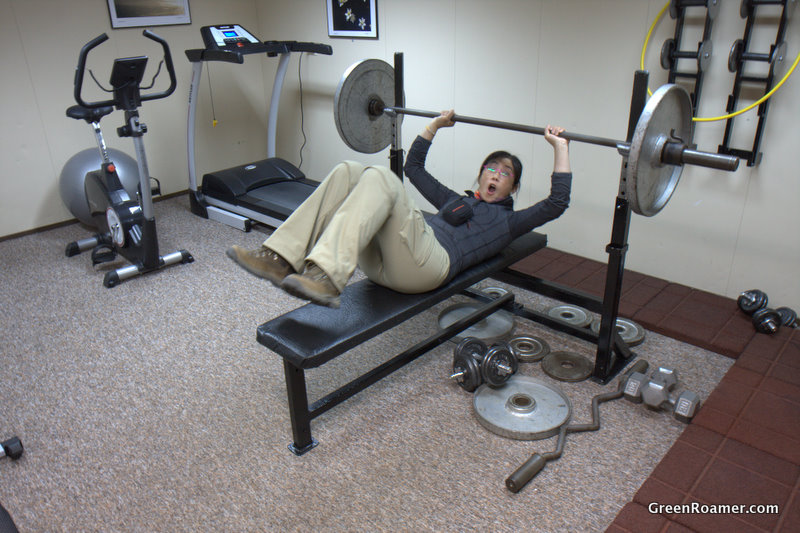
If you’ve been on a cruise ship, you are already familiar with lifeboat drills. Though nowadays many large cruises don’t require you to wear life jackets to the drill. This ship’s drill skipped nothing, life jackets and all. We also crawled into the life boat, which is completely water tight, like a mini submarine. Hopefully we won’t have to put our newly acquired skills to use.
Here’s a video of one of the ship’s guides, Sarah, sorting passengers.
After the ship left port, the bridge was open for visit. Neither of us had been in one, so we did not miss the opportunity.
Not much else to report on the first day, Tracy and I roamed the ship until the excitement worn off and we are tired. The sailing was smooth that night and we slept soundly.
We woke up to beautiful blue sky. I didn’t take sea sickness medication this time, at least not for the first week or so, we are not crossing the Drake Passage or sailing in Antarctic waters. I’m doing ok so far. Tracy, however, had a fit of seasickness during lunch. Fortunately she was able to sleep it off quickly.
We will be at sea for one full day. It was never boring though as there were lots of talks and activities on board. There were also frequent sightings of marine mammals and birds around the ship.
First day at sea. Looking back, there's no land in sight.
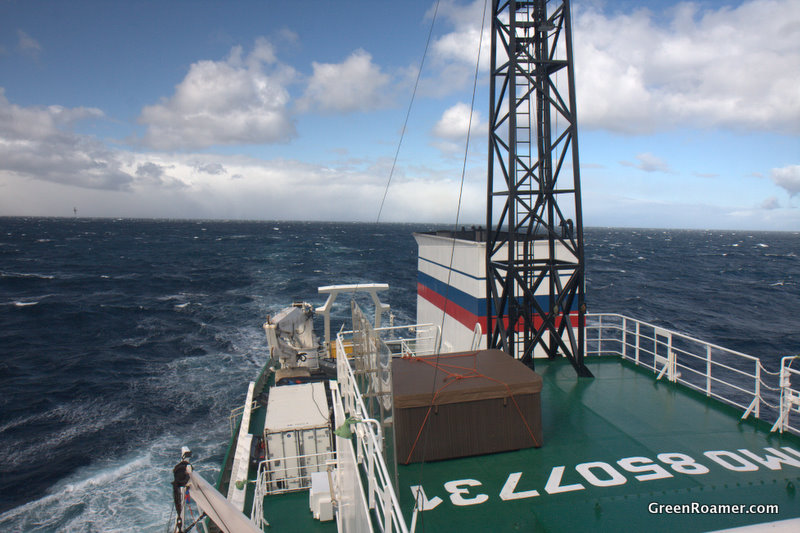
Our first destination was the Falkland Islands. The Argentinians call it Islas Malvinas. This is the site of a bitter dispute and a brief war between Argentina and UK in the 1980s. It’s know in China as 马岛战争. It’s one of the more “modern” wars fought between two developed nations. One interesting tidbit was that in one of the presentations about the history of Falkland Islands given by the ship’s historian David, there were heated arguments coming from one of the British tourists on board. It’s quite obvious that although the war ended almost 30 years ago, bad feeling was still there.
A Commerson's Dolphin following our ship. It's black and white pattern was quite different from the dolphins we used to see.
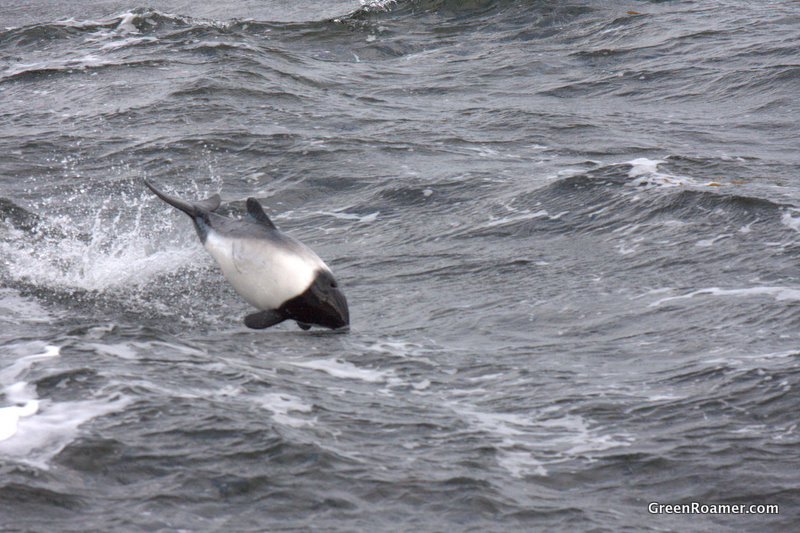
A Cape Petrel. They like to fly really close to the water and stir it with their feet.
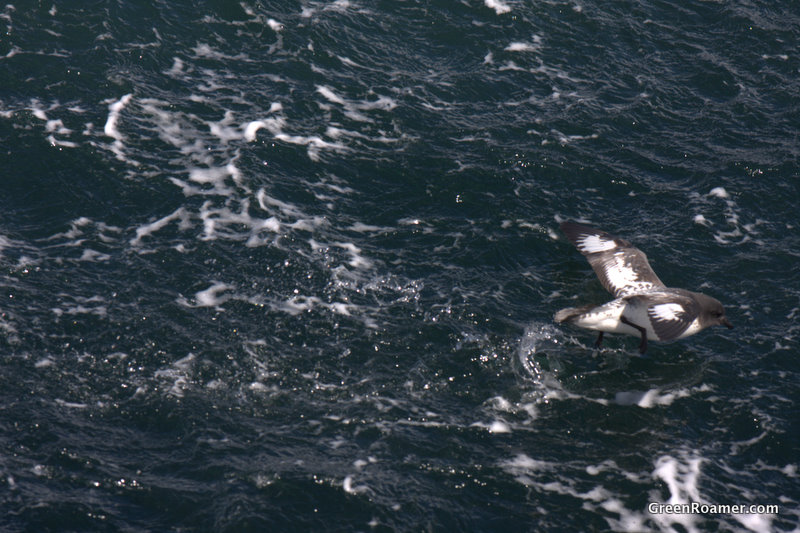
We met Pieter and Morielle from the Netherlands, Padma from New Jersey, and Ken and Natasja from Texas. Rolf, who claimed to be the only German on board, is very well traveled. It seemed that he had been to every corner of the world, at least every place we had been to or were planning to go.
Our first landing was at West Point Island. There was just one sheep and cattle farm on this tiny island. There were no docks in most of the places we visit, so landing is done on Zodiacs. We wore knee-high rubber boots because we will need to step into the water when landing.
Storage shed and old cars

Looked like the plants were able to hang on to a little bit of soil when the rest were swept away.
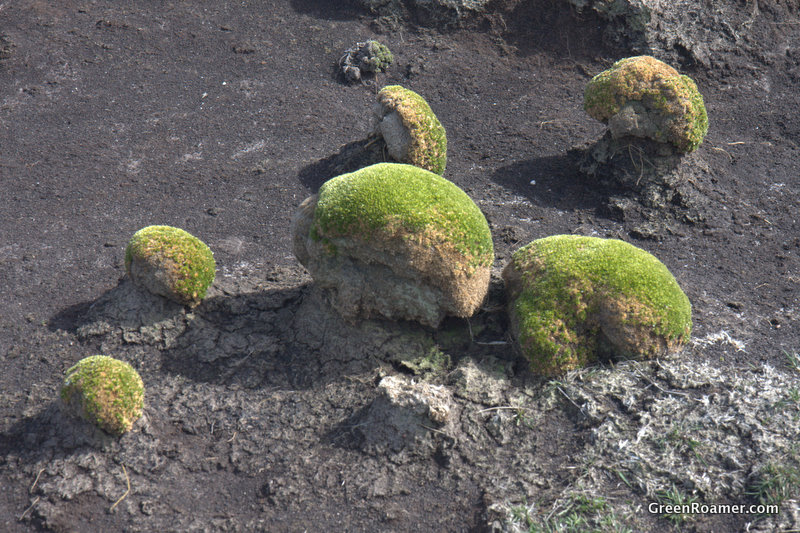
A small bird near the top of the island.
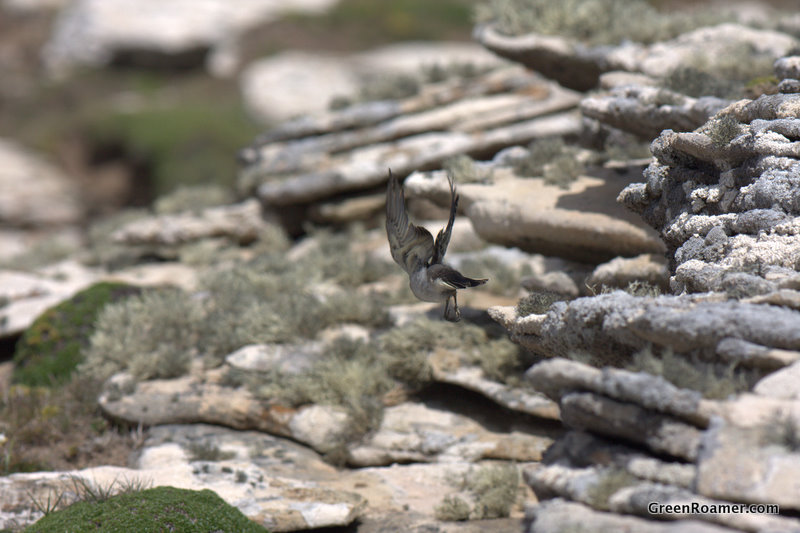
Colorful lichen on the rocks
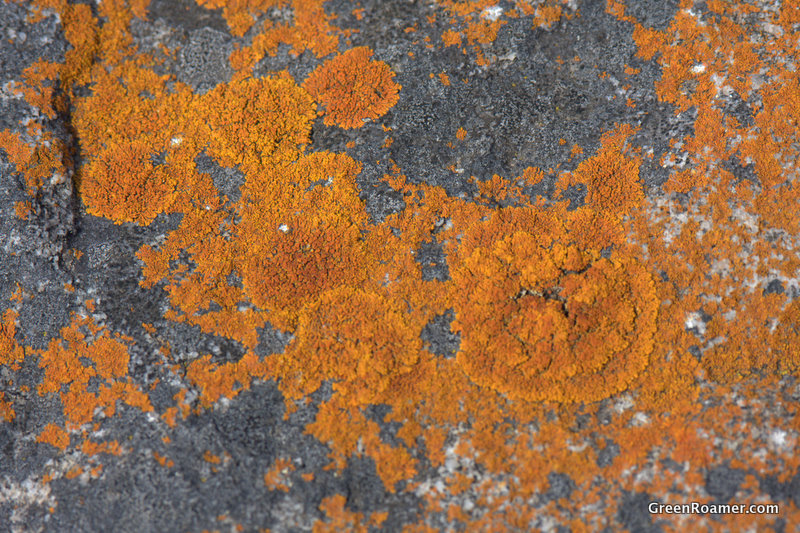
Highlight of this island is a large albatross and penguin colony on a rocky stretch overlooking the ocean. These two very different bird species co-mingle and nest in the same patch of land. It’s amazing to watch the interaction between them.
The Black-Browed Albatross is a large bird that can grow to 10 lbs with a wingspan of almost 2.5 meters. While in flight, they are incredibly graceful. However, their size makes taking off and landing rather tricky. They will often need to jump off a high place to take off and do some sort of a semi-crash landing.
A proud Black-Browed Albatross

Albatross landing
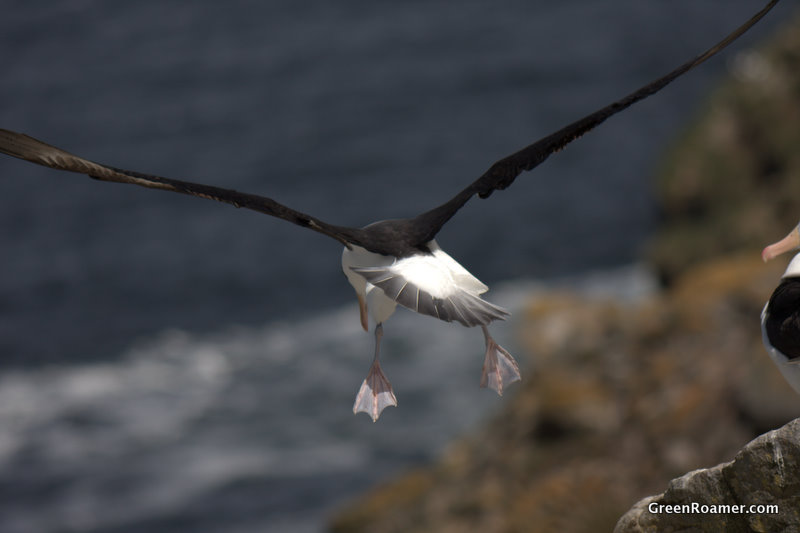
Alongside their neighbors, these Rock Hopper Penguins looked positively puny. If you watched Surf’s Up you will recognize these little guys. They looked like evil scheming little bad guys.
What cha lookin at?

Red eyes and cool hair do
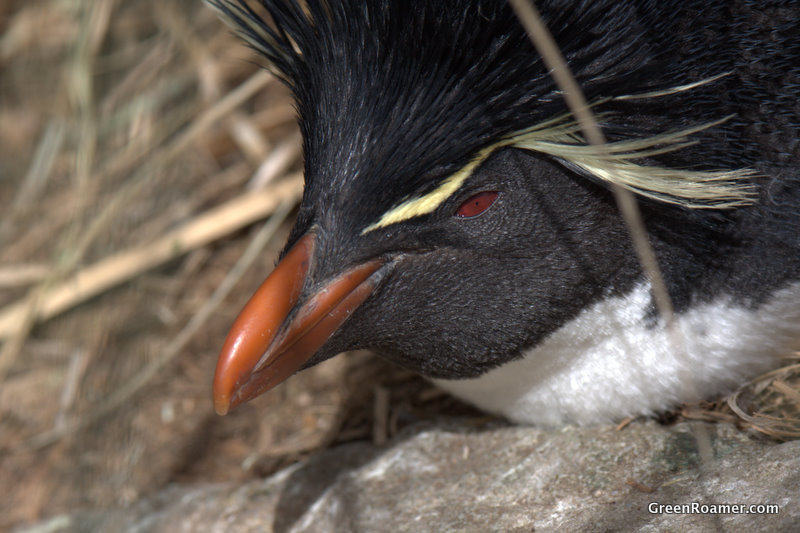
Frequent feather cleaning is a must in a place where you get bombed all day long
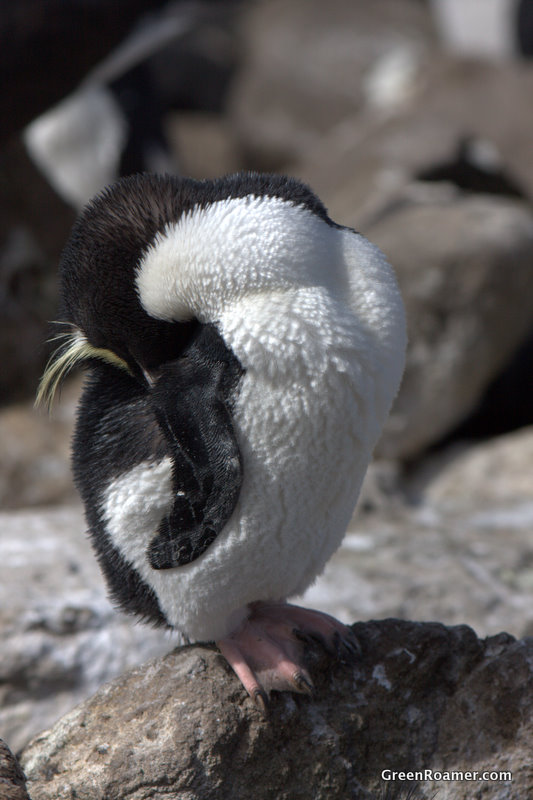
Nowhere to land

The nesting birds will peck at anyone who dares to walk close by. So sometimes a bit of rock hopping is necessary.
They are not called Rock Hoppers for nothing
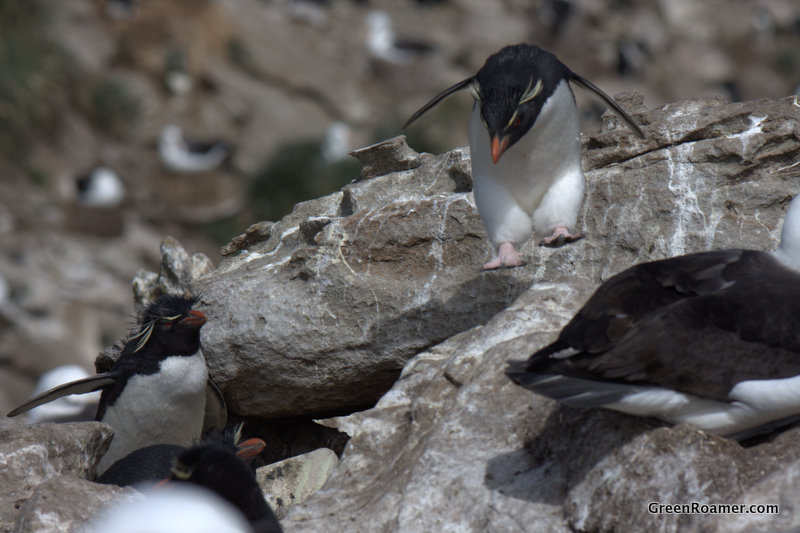
A couple showing their love for each other
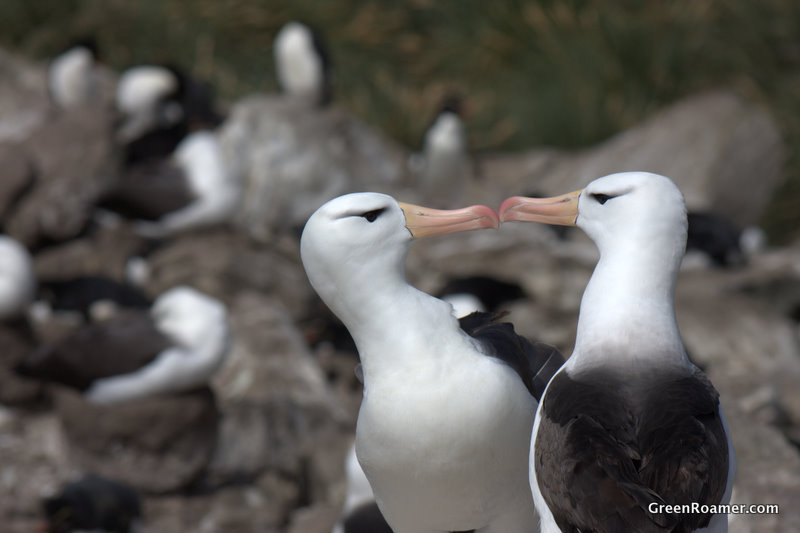
Sweet, huh?

Tracy carrying a huge stand issue blue waterproof bag- Don't worry, the bag's empty.

We have payed for an optional Kayak program, but we opted to skip it for now as we’d like to spend more time with the wild life. We were one of the last to get back on board.
A guide preparing the kayaks
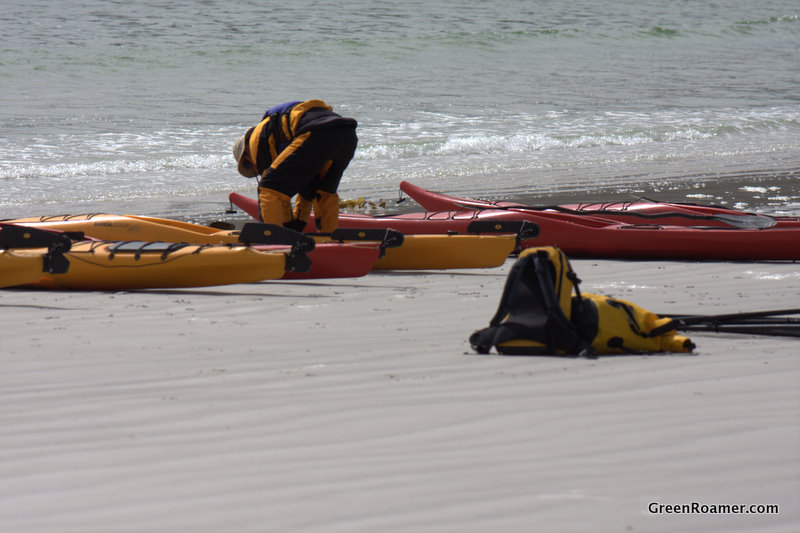
In the afternoon we landed on Carcass Island. Not a very attractive name I know. We were able to spot a few more species of bird life here.
Magellanic Oystercatcher and chicks

We saw a pair of Oystercatchers dive bomb a Caracara. Likely the Caracara is very close to their nest and they were trying to drive it away. The Caracara tried to hide in the tussock grass.
Magellanic Oystercatcher harassing a Caracara
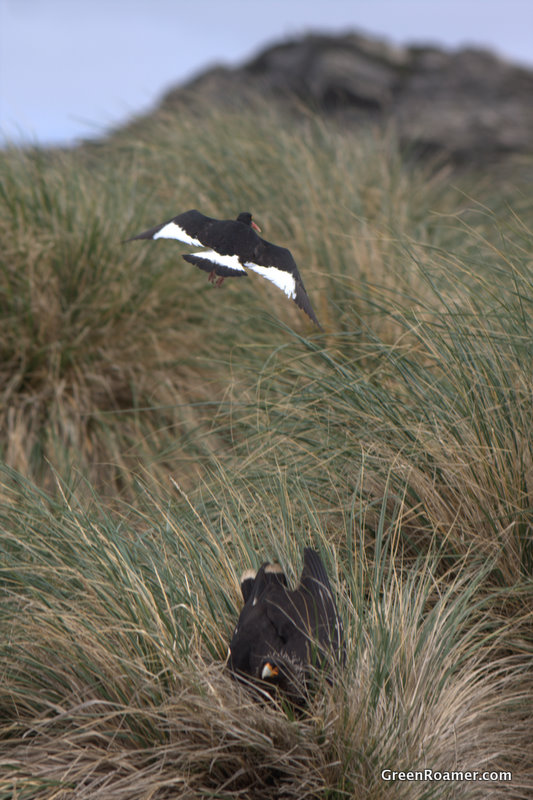
A Magellanic Penguin wandering on the beach

A small wave scattered the 4 little Upland Geese chicks

The penguins nest in the tussock grass. We often see them coming out of the water and head straight for the grass, but sometimes they get spooked and run back to the water. It was hilarious to watch.
Gentoo Penguin trotting out of water
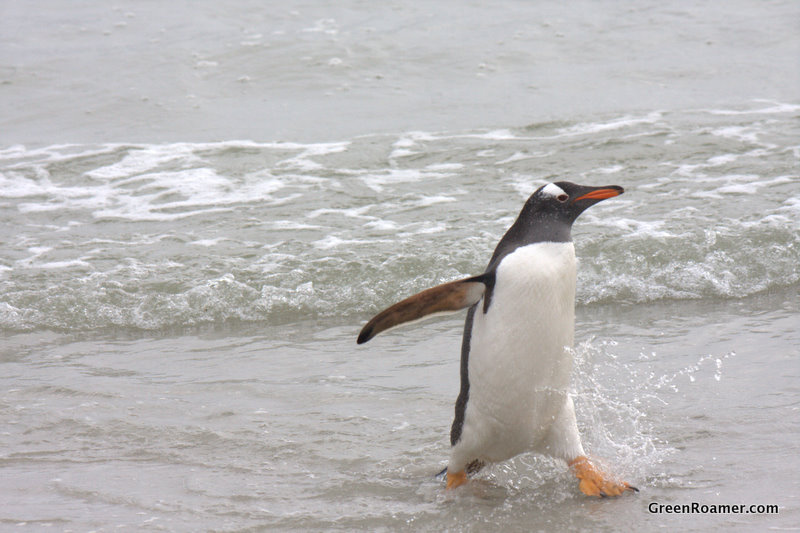
Blade-like rock formations along the shore of Carcass Island
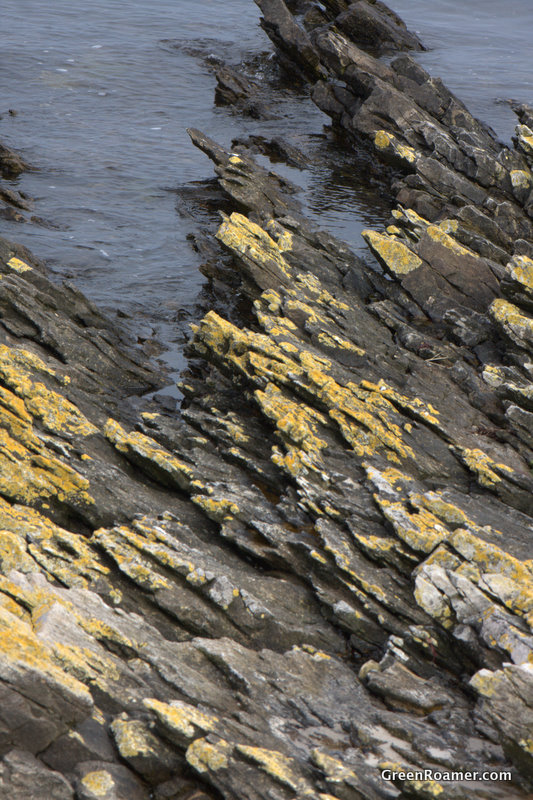
A Striated Caracara looking sharp
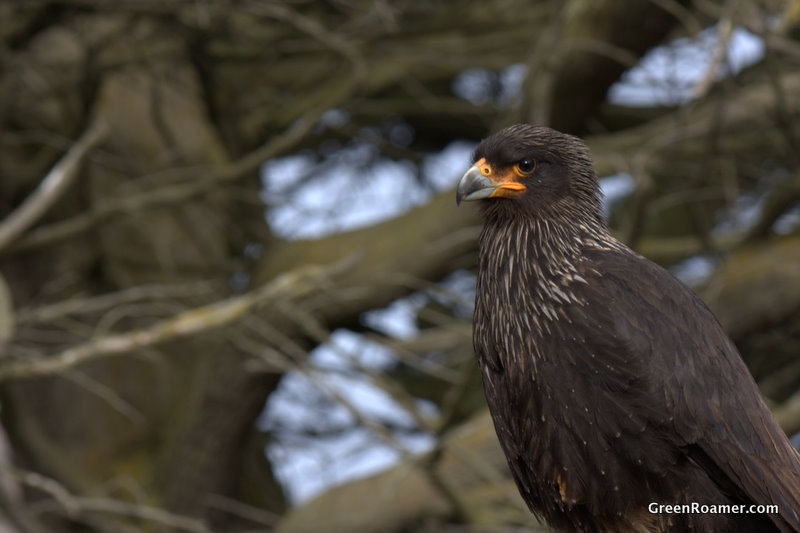
Many species of birds share the beach in peace. Here is a group of Gentoos in front of some Magellanic Penguins, with the geese family we saw earlier in the fore ground.
While heading back to the ship, a group of dolphins started to circle around our Zodiac. To be so close to them in the open ocean is magical.
The next day brought us to Stanley, capital of the Falkland Islands. This time we landed right on concrete docks – no need for those clumsy rubber boots.
Yesterday’s good weather didn’t continue. It’s rainy and windy. A group of us boarded a bus for a place called Gypsy Cove, led by the ship’s intrepid Ornithologist Simon. On the way there we stopped to look at some old ship wrecks.
If you look carefully, there's a guy digging clams, toward the tail end of the ship.
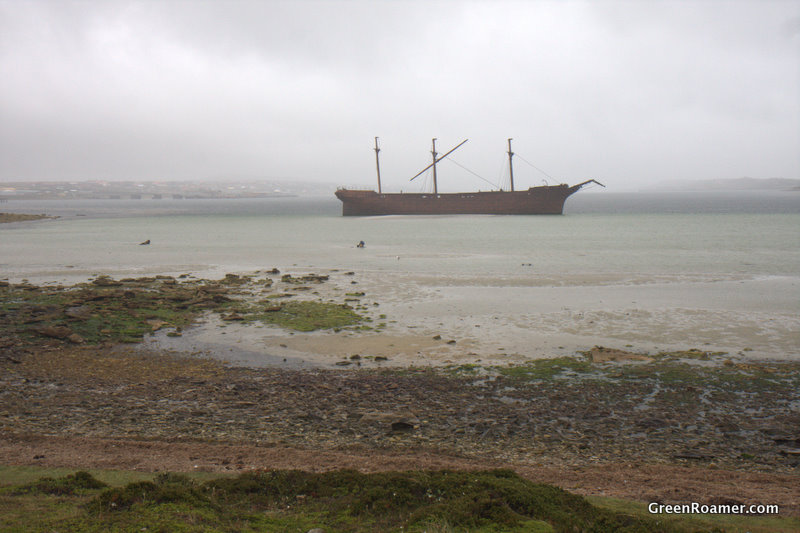
Good job with the painting
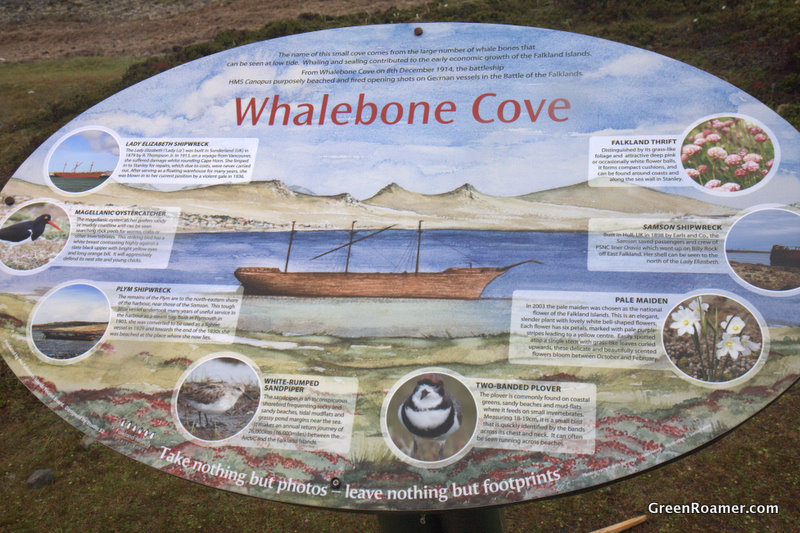
We couldn’t have picked a worse time for this trip. Strong wind and heavy rain kept my camera inside my jacket almost all the way. On top of that, the entire beach is off limits because of landmine danger. Yup, you heard it right. The Argentinian army dumped loads of landmines on these beaches during the war, trying to prevent the British army from landing. That didn’t work out so well, but it did make the life of any British citizens subsequently living on these islands less enjoyable.
Although landmines were cleared from most of these beaches, they could still be moved here by ocean waves from other uncleared fields. The end result? These signs. One positive side of this is that wild life live undisturbed on the beaches.
Go out there only if you don't mind losing a leg or two.

Stanley Docks, flying the union jack
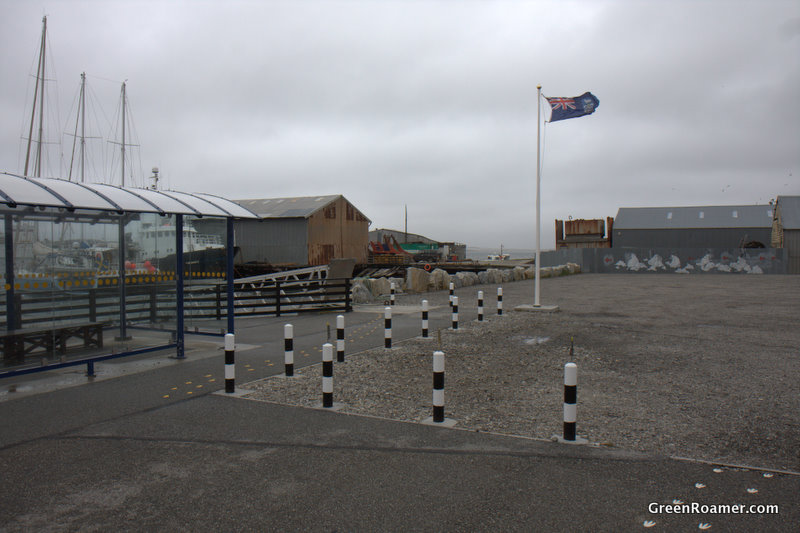
Main waterfront street, they drive on the left too
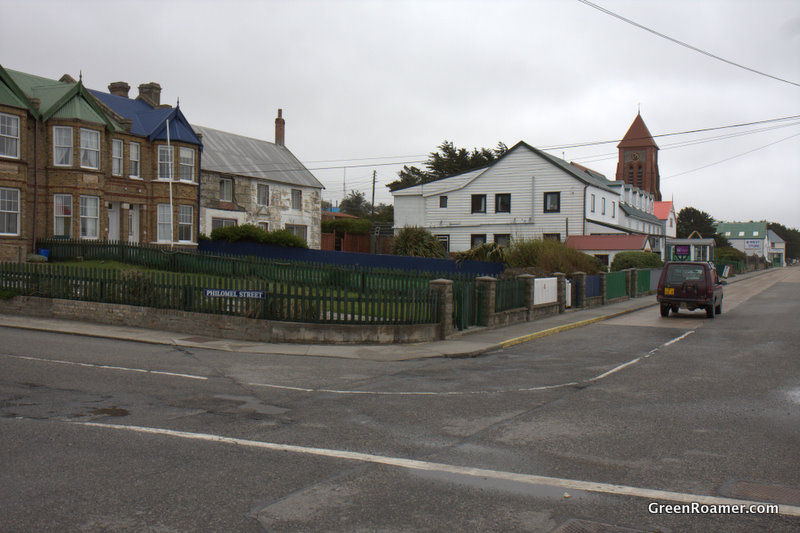
We wandered around the little town after the sky cleared up a bit in the afternoon. Luckily we were able to get wifi access here. Hooray!! We hungrily downloaded whatever we could before our purchased time was up ($11/hour). Life is hard without Internet. No such luck for the next 2 weeks though.
The town has a small museum. The displays were mostly about the islands’s discovery and colonization, as well as whaling history. Our favorite was a large and complex music box.
We found a bright colored gift store at a street corner. The owner is a happy lady who is perfectly happy to have someone to talk to on a slow day. We talked about her only trip to the States many years ago, the weather, and how the town’s population is tripled every time there’s a cruise ship in town. We bought a little magnet with a landmine warning sign.
The Girl with a Enormous Bag.

One prominent structure in Stanley is a whalebone monument in front of the local church.
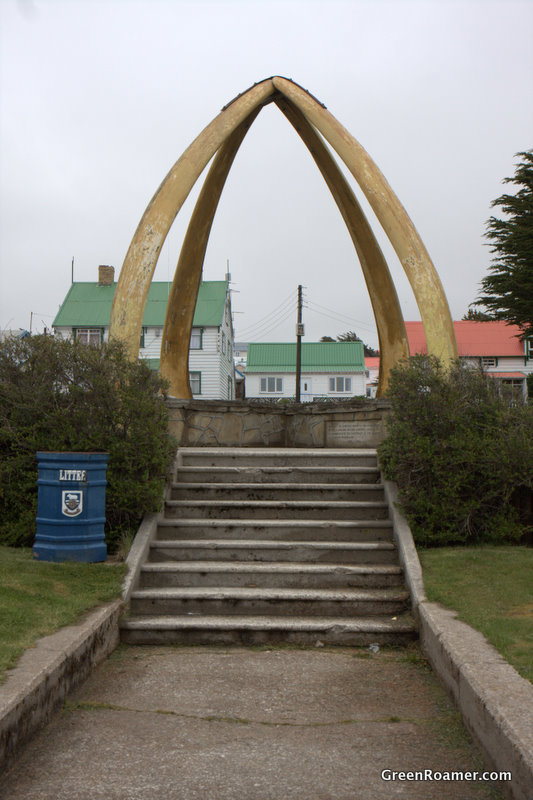
Looking closely at the texture of the whale bones
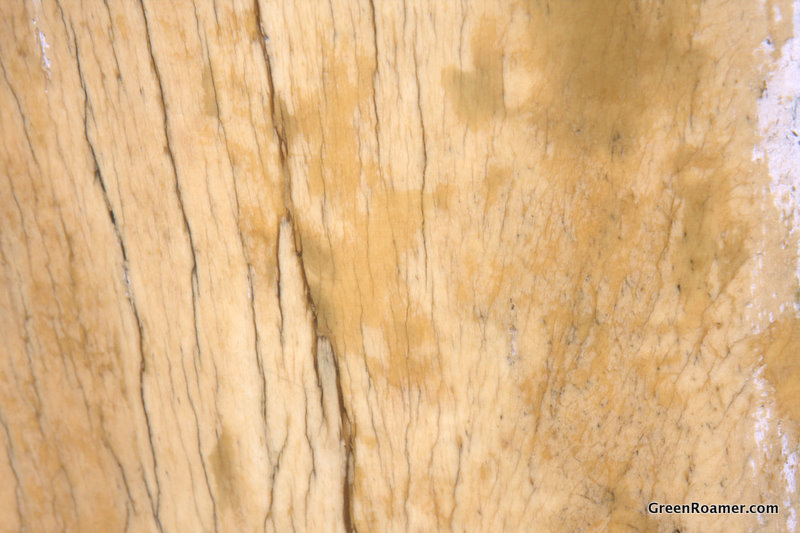
This old house has lots of character
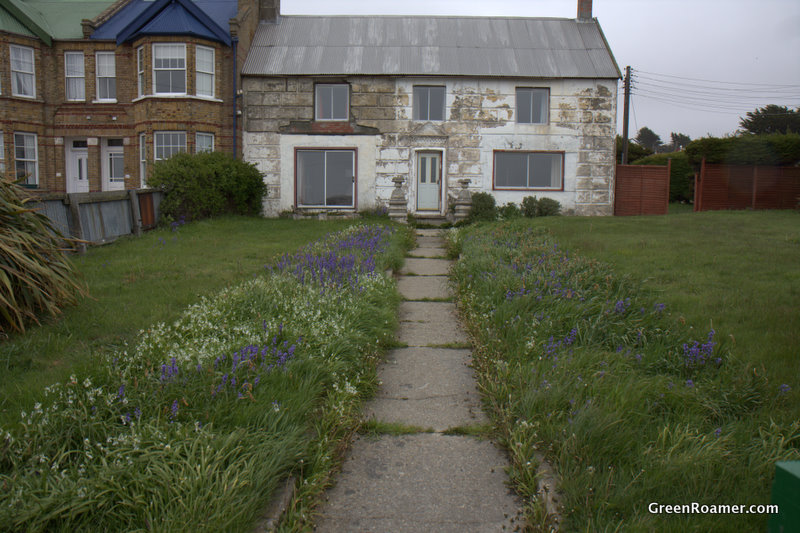
Many sea birds love to follow ships, some even do so for the entire voyage. So there’s no lack of photo opportunities if you are not afraid of the cold ocean breeze.

Remember the Andean Condors from our Patagonia trip? They had the largest wingspan of any land birds. Wandering Albatrosses (seen in the picture above) have the largest wingspan, period. Their wings, when fully spread, can reach a whopping 3.5 meters. We spotted this guy when we left the Falkland Islands. It’s really enjoyable to watch it effortlessly gliding through air.
We set sail to South Georgia Islands now. We will spend two days at sea, and the open ocean could mean more rolling of the ship. We are keeping our fingers crossed.




